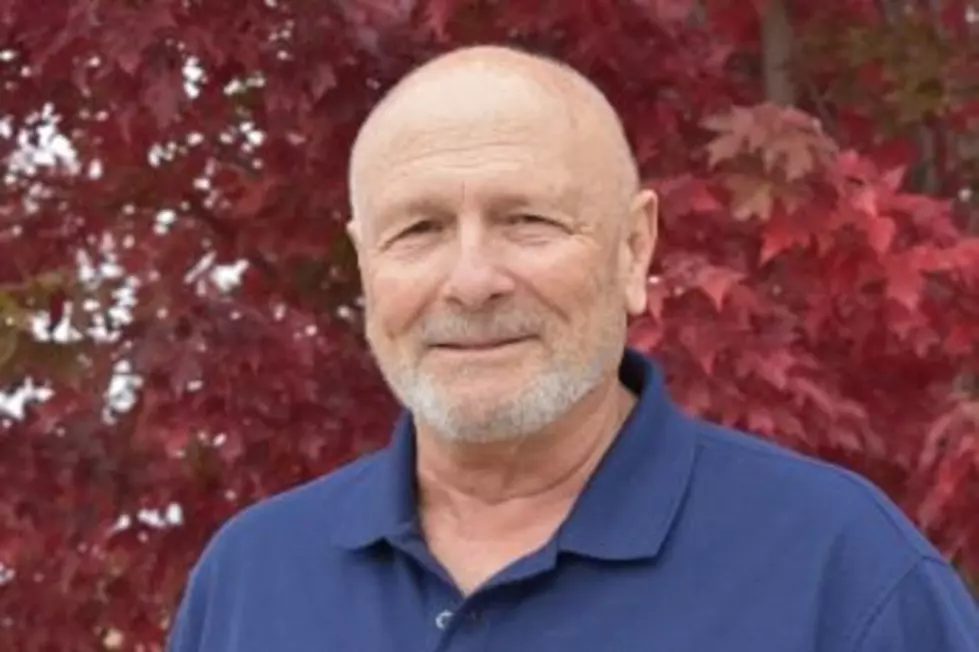
Harmon’s Histories: The father-son duo who brought radio to Missoula, Bitterroot valleys
In the early 20th century, Ashley Dixon’s apple orchard in the Sunnyside-Three Mile area of the Bitterroot Valley was described as “one of the most carefully kept in the valley.”
The Stevensville Register said Dixon had “made a careful and exhaustive study of orchards and marketing methods in various Western states,” and his efforts had paid off.
Those travels through Western states also propelled Dixon and his young son, Ashley Jr., into a passionate new hobby.
In California, the father and son were smitten with a new technology – radio broadcasting – something that didn’t exist in western Montana.
Returning to the Bitterroot in 1922 with a state-of-the art radio receiver, they strung antenna wire around their property, hooked everything up and “music came from everywhere!”
Dixon wrote, “As is the case with all radio beginners, we had an ambition to see how many stations we could pick up and identify during the winter months of 1922-23. One hundred and forty-six broadcast stations were logged, ranging from KDYX of Honolulu on the west to CKAC of Montreal on the east.”
But 15-year-old Ashley Jr. wasn’t content with merely receiving broadcasts, asking his dad, “Why not put in a broadcast station of our own?”
Ashley Sr. “tried to discourage the idea as gently as possible.” But, as he wrote in an article for a Chicago Post “radio magazine,” he quickly caved, although he made his son agree to study all the technical aspects of broadcast construction, and learn everything needed to pass the test for a commercial operator’s license.
In July 1923, Ashley Jr. traveled to Missoula, took the test overseen by a government radio inspector, and passed.
Over the next few weeks, father and son worked tirelessly to find the right equipment needed. “Following the designs of Abner R. Wilson,” a Butte radio engineer, they used a “five-watt Hartley circuit” combined with a “Heising modulator.” Finally, they “hit upon a combination that was nearer perfect than we ever dreamed it could be.”
Soon, they were granted a broadcasting license and assigned the call-letters, KFJR. They were, in Ashley Dixon’s words, “ready to torture the atmosphere for the benefit of local fans.”
Announcements were sent out to newspapers statewide that KFJR would begin broadcasting from the Stevensville farmhouse on Sunday, September 22, 1923.
The Anaconda Standard reported the younger Dixon would operate the equipment “on a wave length of 268 meters,” from an excellent position atop the Sunnyside bench overlooking the valley.
The paper said Ashley Dixon Sr. would “do the announcing and arrange the programs in conjunction with the Dickens Piano company of Missoula.” The Winifred Times noted, “Regular programs will be given every Friday and Sunday nights from 8 to 9 o’clock.”
Soon, the father-son team was busy recruiting talent to travel to the little farmhouse to create live broadcast programs.
In March 1924, the music school’s dean, DeLoss Smith (a baritone), performed with his wife as accompanist. They brought along the varsity quartet as well as Miss Bernice Berry, a pianist, and Ernest Atkinson, who played the mellophone.
In that same broadcast, Charles Roberts, the manager of the Missoula Chamber of Commerce, presented “a radio talk on western Montana.”
A few days later, an excited Ashley Dixon Sr. stopped by the Missoulian newspaper office to report that “the KFJR program of last Friday established a new southern record for his station. A radio fan in Paris, California ‘got it on the loudspeaker.’”
More broadcasts followed. The Big Hole Basin News reported, “The combined Hamilton and Stevensville bands, forming the Bitter Root band of 25 pieces under the direction of C. D. Tomlinson, visited the (Stevensville) broadcasting station and rendered a few selections.”
The paper quoted Dixon Sr. as saying, “The compliments began coming in immediately by phone, letters and radio ... from receiving stations from Alberta to Los Angeles.”
But KFJR’s broadcasts from the ranch house in Stevensville went on for only a year or so. By early 1925, Ashley Dixon Jr. had accepted a job offer in Portland, taking the station’s equipment with him. He transferred his license, and the station broadcast from Portland into 1928.
But Missoula and western Montana would not be without a radio station.
Even as the Dixons had been busy building their radio station back in 1923, a young man had arrived in Missoula to interview for a job heading up the physics department at the university. By the end of his first day in town, he had the job and a commitment from State University (now UM) to support the construction of a campus radio station.
Next week, we’ll chronicle that project.
Additional notes:
One online chronology has KFJR operating on 1160 kHz, then 1140 kHz from June 30, 1924 to June 29, 1925 in Stevensville, then moving to 1350 E 36th St., in Portland, Oregon.
The Department of Commerce also licensed Ashley C. Dixon and Son to operate amateur radio stations with the call letters 7XAF, 71T, and 7.4CP from 1922-1926.
